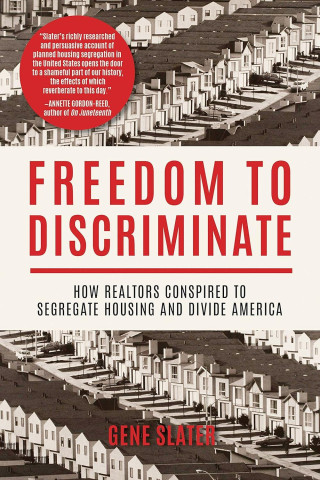No place has played a more central role in the creation of residential segregation than Los Angeles. With its fast-growing subdivisions and enormous real estate industry, the city shaped the divided neighborhoods and political arguments that drive America today.
The reason has much to do with California. Residential segregation is not natural, normal or historic. It was an early 20th century marketing invention of Realtors, a way to sell homes. Like many American innovations, it flourished first in California.
At the beginning of the 1900s, racially segregated neighborhoods did not exist in American cities. J.B. Loving, a Black real estate agent in Los Angeles, proudly reported in 1904: “The Negroes of this city” have not segregated themselves “into any locality but have scattered and purchased homes” across the best sections. Japanese and Mexican American residents were dispersed in many areas as well.
Where you could live, in L.A. and cities nationally, depended on where you could afford to live — not your ancestry.
By 1917, an African American resident described a very different Los Angeles due to race-restrictive covenants: “We were encircled by invisible walls of steel. The whites surrounded us and made it impossible for us to go beyond these walls.”
Power was at the heart of this change. Newly established all-white real estate boards, including the Los Angeles Realty Board, the largest in the country, organized the industry and came to control the vast majority of home sales. It took a cartel, its members trademarked as “Realtors,” to control whose money could buy a home — to limit America’s free market.
In 1905, pioneering real estate agents in Berkeley and Kansas City, Mo., began recording racial covenants to sell house lots in high-end subdivisions, but L.A. soon became the national leader in using such deed restrictions. Covenants were immediately marketed on luxury developments: The Beverly Crest subdivision was advertised as “permanently restricted … for particular people”; similar language was used for Beverly Hills, Hillhurst Park and Bel-Air.
Middle-class subdivisions quickly followed. Harry Culver, who would become the Realtors’ national president, carved Culver City out of a 200-acre barley field. Twenty blocks south of Exposition Park, a Los Angeles Realty Board vice president established permanent “iron-clad race restrictions.”
Racial restrictions soon filtered down to working-class subdivisions in the region. Eastmont, City Terrace, the St. Francis tract in Highland Park and the new city of Torrance advertised “permanent race restrictions” to benefit “the working man.”
By 1913, racial restrictions were so widespread, the Los Angeles Housing Commission lamented, that Mexican Americans would be able to secure housing only if restrictions “were not placed upon every new tract of land where lots are sold.” Here was a strange new kind of American city.
